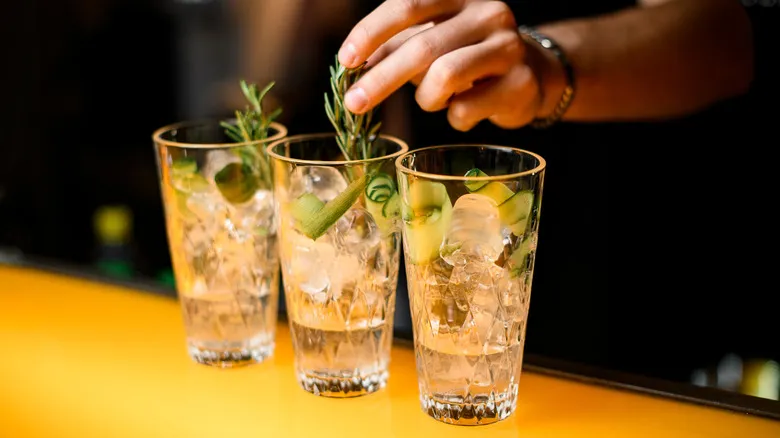The herbs that will benefit from a light smack
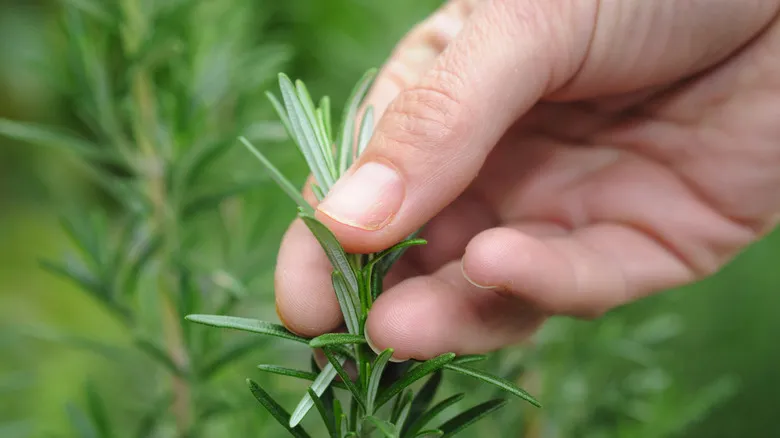
Although there are countless garnishes available, those that fall into the "might want to smack" category primarily include various herbs. From rosemary and mint to basil and thyme, the options are extensive. To experiment with this technique on your chosen herb, simply take it in your hand and gently slap it with your other palm. You should notice a distinct aroma in the air almost instantly. Whether you're looking to enhance a thyme garnish for a gin and tonic or infuse more delightful scents into an old fashioned, this method can be quite effective.
While slapping or rubbing a garnish before adding it to a drink is beneficial, mixologists also use similar techniques that yield comparable results. Although smacking is tool-free and convenient, it’s not just practicality that makes it preferable for certain cocktail garnishes. There’s a related technique in mixology called muddling, which is similar to using a mortar and pestle. This method is widely used in cocktail preparation, which is why it’s often included in the best cocktail sets.
When it might be time to muddle a garnish instead
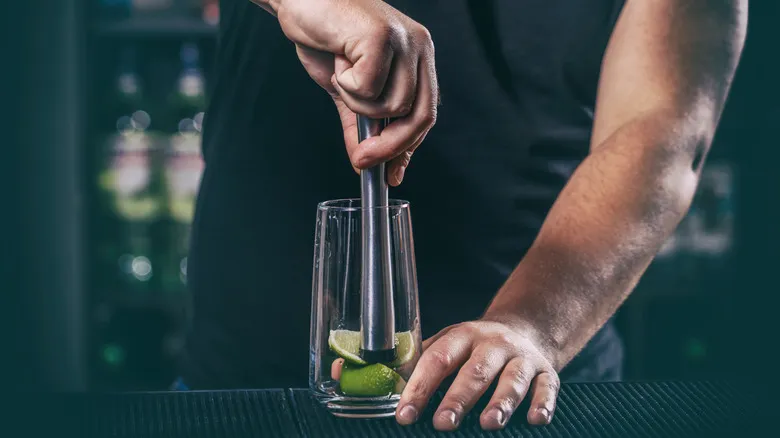
Muddling involves bartenders using a stick to crush or smash herbs in a glass to release their flavors. So, how do you determine when to muddle versus when to slap? It all comes down to the type of garnish. Some leaves and stems are more delicate than others, and over-extracting their flavor can be detrimental. Herbs contain fragrant oils as well as earthy, bitter compounds like chlorophyll. If you over-extract these oils, the drink can end up tasting overly earthy or bitter. The goal is to agitate the herbs just enough to release their oils without also bringing out the deeper chlorophyll, which can introduce unwanted bitterness. If an herb that should be slapped is muddled instead, it can leave drinkers with an unpleasant taste.
To avoid this issue, only muddle tougher garnishes like fruits such as strawberries or citrus. Muddling these fruits helps to release their inner acidic sweetness, while more delicate herbs with leaves and stems should be reserved for slapping. This is why the question of whether to muddle or not muddle mint for a Mojito is such a hot topic. Fortunately, slapping or rubbing is always an option, so it's beneficial to keep both techniques in mind when crafting cocktails.
Recommended
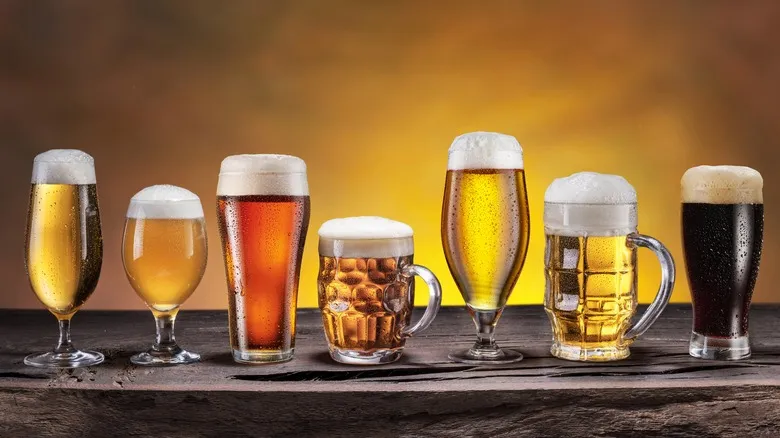
13 Types Of Beer Glasses And When To Use Them

12 Wine Subscriptions To Toast To Each Month
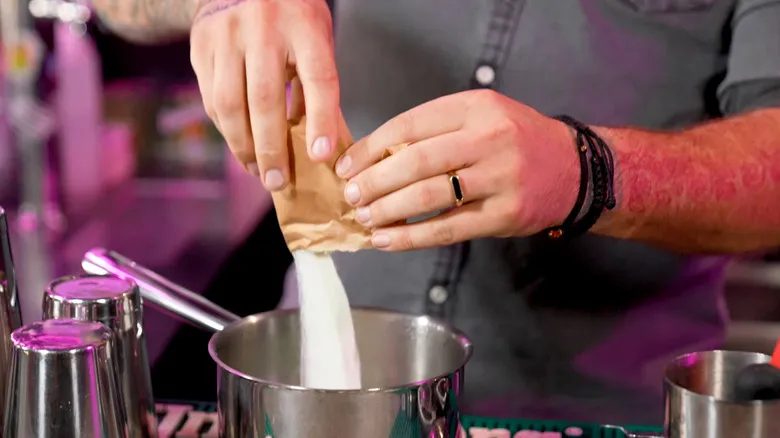
How To Make Jell-O Shots - You're Doing It Wrong All Wrong
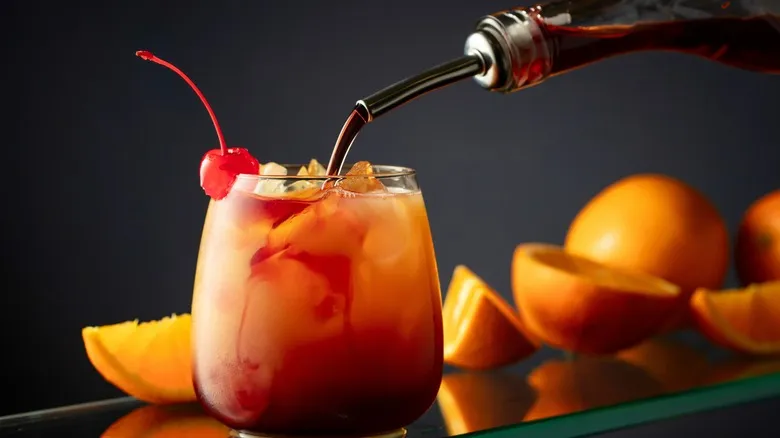
Surprise! Grenadine Syrup Isn't Cherry-Flavored
Next up

